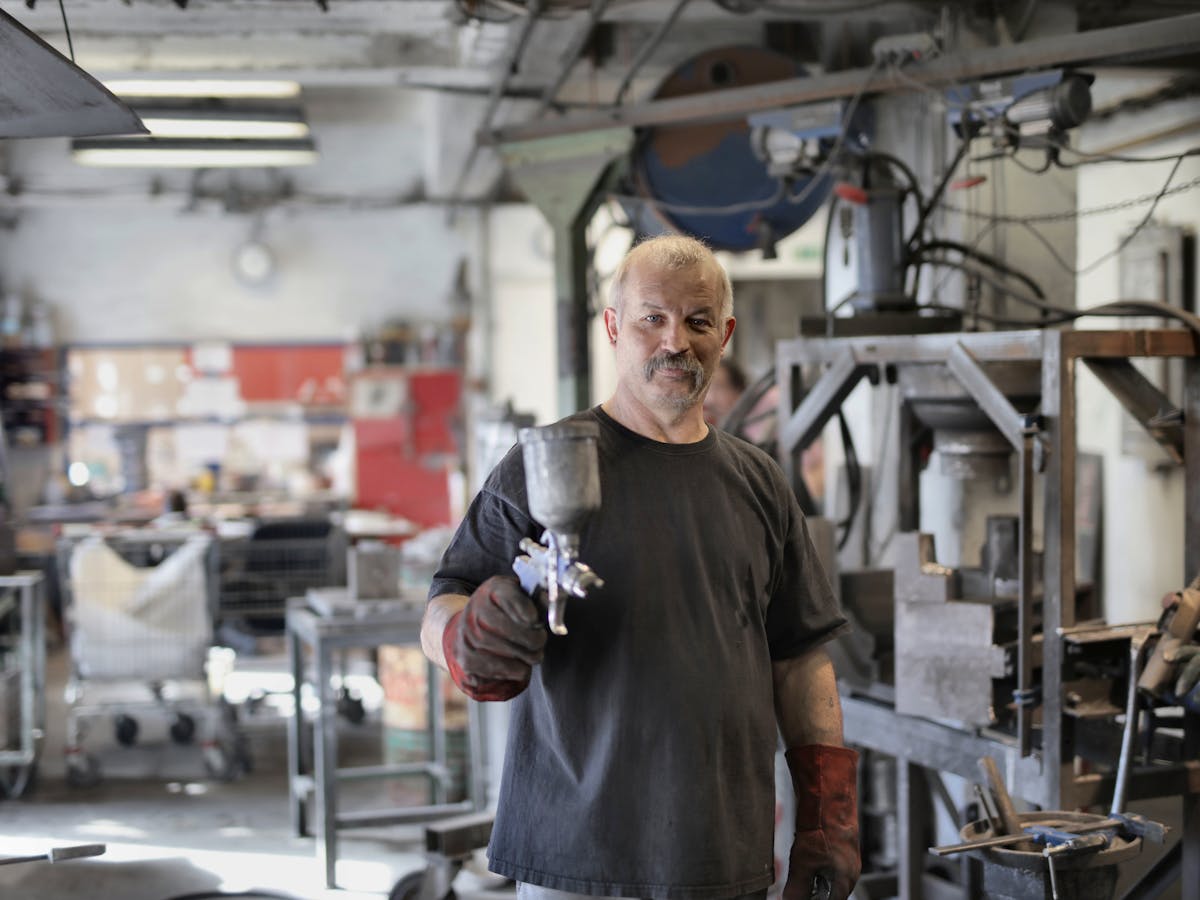Mastering sandblasting is like exploring endless possibilities, where each grain of sand holds transformative potential.
From safeguarding yourself with proper safety gear to unveiling the secrets of selecting the ideal blasting media, each tip will unveil a new facet of this craft.
Here are some sandblasting tips for your consumption.
Key Takeaways
- Safety gear is essential: wear protective clothing to prevent injuries and health risks.
- Choose the right blasting media: consider materials for desired results and efficiency.
- Select the appropriate blaster type based on the project scale and speed requirements.
- Use quality sand for optimal performance and to avoid clogging and equipment damage.
Safety Gear Essentials
To ensure your safety while sandblasting, equipping yourself with the necessary safety gear is crucial for protecting against potential hazards. Respiratory protection is paramount when dealing with airborne particles. A face mask with appropriate filters will shield your lungs from inhaling harmful dust.
Additionally, eye safety is essential to prevent any debris from causing injuries. Goggles that fully cover your eyes are a must-have to maintain clear vision and avoid any eye damage.
In addition to respiratory protection and eye safety, wearing suitable protective clothing is vital. Long sleeves and pants will safeguard your skin from abrasive materials, preventing any potential skin irritation or injuries.
Gloves are also necessary to protect your hands from the rough particles and ensure a secure grip on your equipment.
Ventilation and Health Precautions
When ensuring your safety during sandblasting, it’s crucial to prioritize proper ventilation and health precautions to minimize risks and protect against potential respiratory issues. Respiratory protection is paramount when working with abrasive materials.
Always wear a face mask and ensure the area is well-ventilated to reduce the inhalation of harmful dust particles. Dust control is essential to prevent respiratory problems; consider using a respirator with appropriate filters to safeguard your health.
Adhering to health guidelines, such as wearing protective gear like goggles, long sleeves, pants, and gloves, can significantly reduce the chances of inhaling harmful particles.
Proper ventilation not only ensures your safety but also safeguards the well-being of those around you.
Handling Delicate Surfaces
For delicate surfaces, exercise caution and patience to ensure successful sandblasting outcomes. When handling delicate materials, such as fragile objects or intricate items, precision blasting is crucial to avoid potential damage while achieving the desired results.
Gentle cleaning techniques should be employed to ensure the safety of fragile surfaces throughout the sandblasting process.
| Key Aspects | Description |
|---|---|
| Surface Preparation | Test small areas first to avoid potential damage. |
| Delicate Materials | Be cautious with fragile surfaces during blasting. |
| Precision Blasting | Ensure the desired results with careful and precise work. |
| Fragile Objects | Handle delicate materials with the utmost care. |
| Gentle Cleaning | Employ gentle cleaning techniques for intricate items. |
Selecting Blasting Media
When selecting blasting media for your sandblasting project, consider the material being treated and the desired results for optimal performance.
Different blasting media have specific characteristics that make them suitable for particular applications. Here are some key factors to keep in mind:
- Media Particle Size: The size of the abrasive particles affects the aggressiveness of the blasting process. Finer particles are gentler on surfaces, while larger particles can remove coatings more quickly.
- Surface Compatibility: Ensure that the blasting media you choose is compatible with the material you’re treating. Some surfaces may be sensitive to certain abrasives, leading to damage or ineffective results.
- Abrasive Material Properties: Each type of blasting media has unique properties that influence its cutting power, durability, and reusability. Understanding these properties will help you select the most suitable abrasive for your project.
Types of Blasters and Benefits
Selecting the appropriate type of blaster is crucial for optimizing efficiency and achieving quality results in sandblasting projects. When deciding on the type of blaster to use, consider factors such as blaster efficiency, nozzle maintenance, project scale considerations, and cost-effective sand reuse.
Here is a comparison table to help you understand the benefits of different types of blasters:
| Types of Blasters | Benefits |
|---|---|
| Siphon Blasters | Slower, cheaper, less problematic, and require fewer frequent nozzle replacements. |
| Pressurized Blasters | Faster, ideal for big jobs, complete tasks around four times quicker than siphon blasters. |
Choosing the right blaster type can significantly impact the efficiency and outcome of your sandblasting project. If you have a large-scale project that requires speed, a pressurized blaster might be the best choice.
Conversely, for smaller projects where cost-effective sand reuse is a priority, a siphon blaster could be more suitable. Consider these factors carefully to achieve the best results.


Leave a Reply